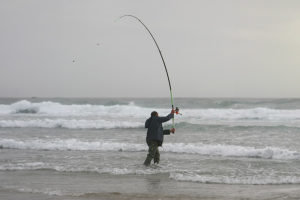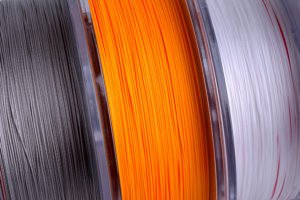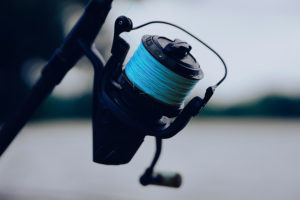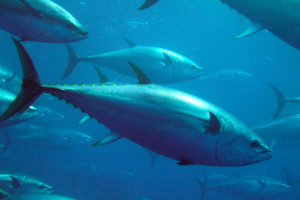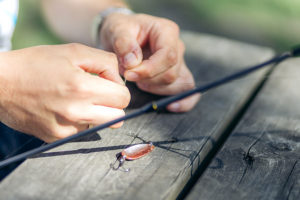El black bass (Micropterus salmoides), también conocido como lobina o perca americana, es uno de los peces más icónicos y apreciados en la pesca deportiva. Su agresividad, astucia y potencia lo convierten en un reto para cualquier pescador, ya sea principiante o experimentado.
En este artículo de WeFish, te contamos todo lo que necesitas saber para pescar black bass con éxito, desde su comportamiento hasta las mejores técnicas, señuelos y equipamiento.
Dónde podemos localizarlos
Una de las principales cuestiones que surgen cuando planificamos la jornada de pesca es dónde podemos encontrar el Black Bass.
Al tratarse de un depredador de acecho, lo solemos encontrar en los llamados límites. Estos son puntos que, por lo general, utilizan los depredadores de todo el mundo animal como escondite donde esperar a sus presas, ya sea entre la vegetación, sombras o en desniveles.
Solemos encontrar a estos depredadores en embalses. En gran medida, la posición de los basses desde el inicio del verano hasta mediados de otoño se debe al efecto que tienen las termoclinas. Estas son la disposición de distintas capas de temperatura en el agua debido a las diferentes densidades entre las láminas de agua. Ello provoca que el pez se encuentre en zonas de confort y alimentación, al mismo tiempo que busca temperaturas óptimas, mejores niveles de oxígeno y refugio.
La vegetación también es importante para la localización de los basses. Esto se debe a que esta vegetación atrae a distintos insectos , larvas o zooplancton del que se alimentarán las auténticas presas del bass: cangrejos de río, peces de pasto, salamandras, etc.
Alimentación preferida
Para saber cómo pescar un Black Bass es necesario conocer su alimentación. No cabe duda de que los Black Basses son peces carnívoros. La dieta de estos se basa principalmente en peces pasto y cangrejos de río, aunque es un factor que depende mucho del entorno, lo que provoca que puedan comer ranas, culebras, sanguijuelas, pequeños roedores como ratones e insectos como las libélulas, escarabajos y arañas.
Al comienzo del verano, empieza la temporada de cría de varias especies de pez pasto y se convertirán en una presa fácil. Estos peces se mueven por aguas de poca profundidad en busca de alimento, y zonas más profundas para lograr refugiarse. Cuando estos se encuentren en zonas más someras, es el momento de mayor probabilidad de pescar a un bass. Por ello, unas buenas herramientas para conseguir pescar con éxito podrían ser los jerkbaits duros o de vinilo, senkos o crankbaits.
En esta época del año, en el amanecer y atardecer es una muy buena opción usar señuelos de vinilos y jigs, mientras intentamos rascar el fondo. Esto se debe a que los cangrejos de río son una de las principales fuentes de alimento durante esta estación.
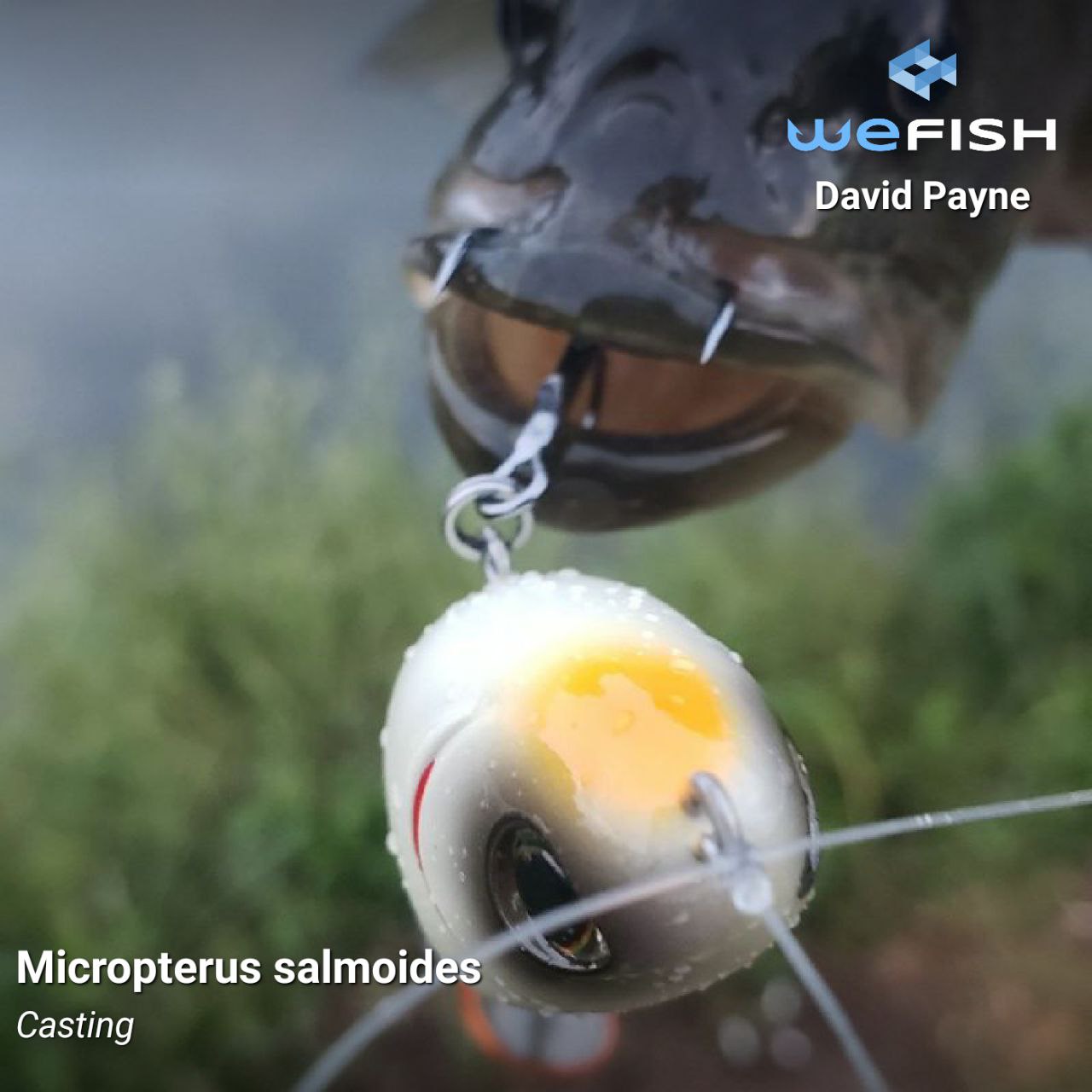
Hábitos del Black Bass durante todo el año
En verano, el metabolismo de esta especie se acelera y buscan constantemente alimento, por ello, una vez que encontremos la ubicación de estos peces, capturarlos es solo cuestión de tiempo. Pero, ¿qué pasa durante el resto del año? Repasamos los mejores trucos para cada temporada.
Cómo pescar Black Bass en Verano
Comenzamos por la época donde veremos más Black Bass por las orillas. Durante el verano, la dieta de los basses se vuelve muy heterogénea, por lo que podemos utilizar las imitaciones de peces, cangrejos de río o reptiles de una forma muy efectiva.
Al comienzo del verano, esta especie puede encontrar alimento en prácticamente todas las capas de profundidad, pero a medida que avanza el tiempo, las parte más superficial se vuelve demasiado caliente, sobre todo en las horas centrales del día, lo que hace que busquen fuentes de alimento en aguas más profundas o sombrías, como por ejemplo, en zonas de mucha vegetación. También los canales de entradas de agua o cornisas sumergidas son lugares donde es posible encontrar basses.
A primera hora podremos buscarlos en zonas someras con señuelos de vinilo y jigs en zonas más o menos someras y escalones cercanos a zonas poco profundas. Los buscaremos suspendidos con vinilos con forma de pez en vertical o Jerck suspendidos usados muy despacio. Durante las horas centrales debemos buscar profundidad o zonas con algas. Al atardecer es el mejor momento en esta época, pescar rápido con Cranckbaits y Spinner sin dejar de lado cualquier señuelo de superficie.
Cómo pescar Black Bass en Otoño
En otoño encontramos unas condiciones inversas. El agua es cada vez más fría y los peces procuran estar en las colas de los embalses, o en los canales de los ríos entrantes a los lagos, en búsqueda de alimento que puede haber sido arrastrado por las crecientes lluvias.
El Black Bass también se dirigirá a esos puntos persiguiendo a sus presas. Aquí tratarán de alimentarse todo lo que puedan para hacer frente al invierno y, por este motivo, actuará de una forma voraz y agresiva. Una vez que conocemos esto, es recomendable que usemos crankbaits imitando peces de pasto, aunque también son útiles los spinnerbaits o cebos que permitan cubrir superficies extensas de agua.
Otoño es la época mágica de pesca de esta especie. Podemos pescar de casi cualquier manera, aunque siempre hay unas mejores que otras. Al amanecer, buscaremos peces con señuelos de superficie y de gran tamaño como swimbaits duros, muy despacio, subiendo la velocidad de pesca cuando comience a calentar el sol. Después del medido día, cualquier señuelo que nos ayude a batir agua rápidamente será bienvenido, especialmente los que imitan a peces tipo Chatterbait o Spinner. Todo el día podemos montar señuelos de vinilo trabajados por el fondo. El atardecer es de nuevo el momento mágico, volviendo a utilizar los señuelos del amanecer pero, esta vez, más rápido.
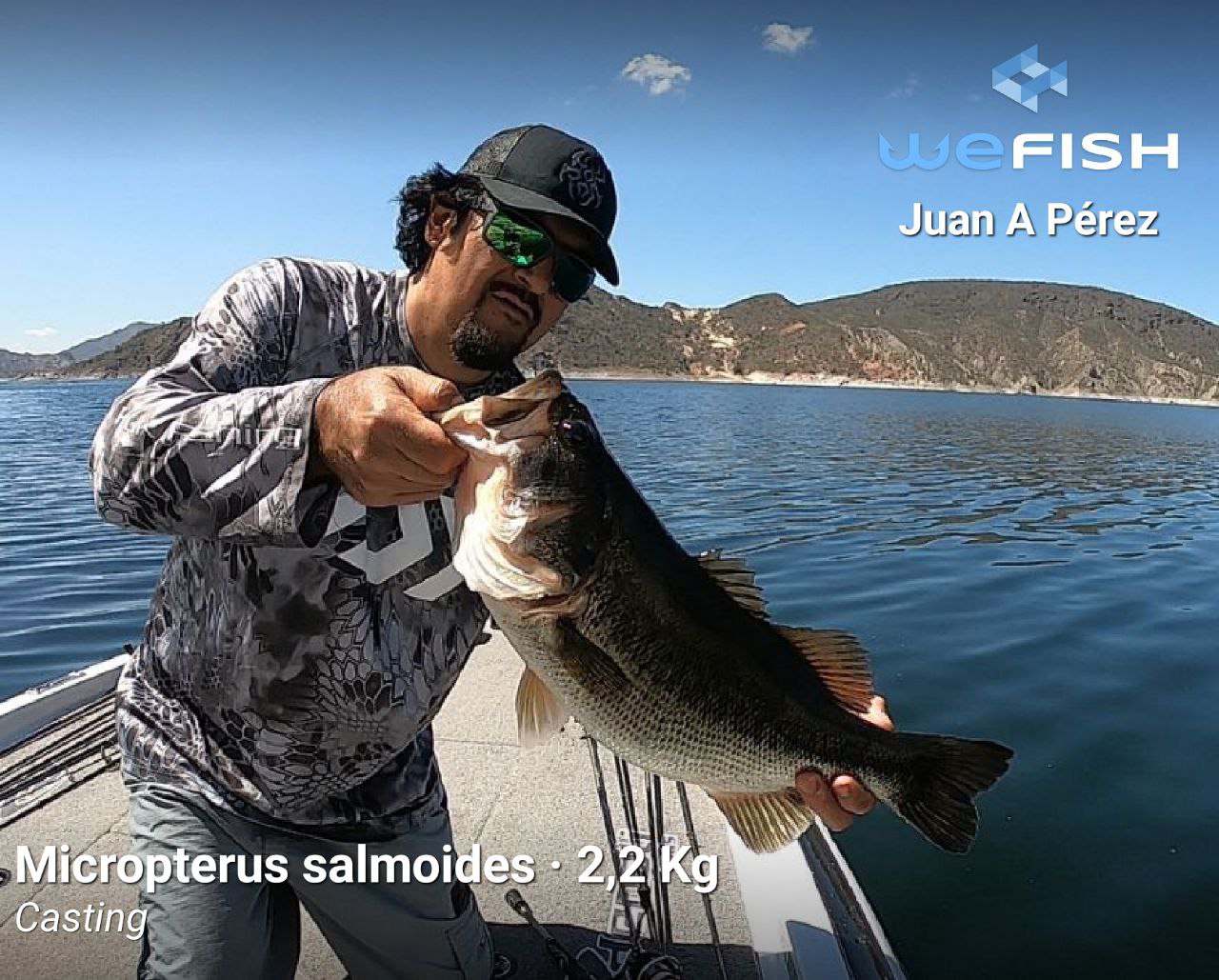
Cómo pescar Black Bass en Invierno
La temperatura del agua baja rápidamente en esta estación, lo que provoca que, por norma general, la actividad de todas las especies se reduzca, incluida la del Black Bass, que tiene menos posibilidades de conseguir alimento. En consecuencia de esta disminución de los nutrientes que recibe, el metabolismo se ralentiza y reduce la búsqueda de comida. Por estos motivos, la posibilidad de que nuestra jornada de pesca resulte exitosa se reduce, aunque no es imposible, ya que todavía los podemos encontrar, en posibles refugios más templados y utilizando señuelos de especies de pasto que comúnmente sobreviven al frío y presentarlos realizando una lenta recuperación.
En esta época no debemos madrugar demasiado. Tenemos que esperar a que el sol caliente un poco para comenzar nuestras jornadas. Prácticamente durante toda la jornada usaremos los mismos señuelos. Jeckbaits duros suspendidos y vinilos o jigs que imiten a un cangrejo de río serán los reyes. También podemos mover peces muy grandes con swimbaits duros o blandos, pero levantaremos muchos peces y tendremos muy pocas picadas.
Un buen truco para encontrar peces algo activos es buscar cortados de piedra donde dé el sol. Al calentarse la piedra, sube la temperatura del agua durante más tiempo y siempre tendrá algunos grados de más. Dejar un Jerck duro suspendido en uno de estos cortados puede ser super efectivo los días más fríos.
Cómo pescar Black Bass en Primavera
Finalizamos con la época más compleja en lo que a la conducta del bass se refiere. Esto se debe a que esta estación es la que se utiliza para la freza. Con el incremento de las temperaturas también aumenta la actividad y su velocidad de metabolismo. Las principales presas se dirigen a las zonas más cálidas, en las partes más superficiales del agua. En este momento el Black Bass busca comida de forma intensa, por lo que será una buena opción el uso de los señuelos grandes que se asemejan a los peces de pasto de la zona y a los cangrejos de río, el aporte de proteínas que dan los cangrejos de río es casi adictivo para los Basses en esta época. Podríamos hacer jornadas completas pescando exclusivamente con Jigs y vinilos montados a texas en los primeros meses de la primavera..
Debemos diferenciar tres momentos importantes en esta temporada. La época previa a la freza es un tiempo de caza intensa por parte del bass debido a que pasará dos semanas sin comer. En estos momentos aumentan las posibilidades de pesca exitosa. Los señuelos que imitan a los cangrejos de río suelen ser una buena herramienta. Durante el desove, el Black Bass se vuelve vulnerable, por lo que actuará de una forma más agresiva para proteger sus huevos. Una imitación de posibles depredadores puede provocar el ataque pero tenemos que tener especial cuidado en esta época, tenemos que proteger a nuestros peces.
Para nosotros, la Captura y Suelta es un principio invulnerable pero, en la época de freza, lo mejor será dejarlos en paz para que puedan hacer su trabajo reproductivo en las mejores condiciones. Por último, en la época posterior a la freza, los basses recuperan el rol de depredador, aunque permanecerá cerca de la zona de desove, y resultaría efectivo buscar a la hembras en zonas del primer escalón. En la Post Freza es muy importante dejar a los machos cuidar de sus crías tranquilos . Siempre estarán cerca de las bolas de “minibasses” cuidando que nadie se las coma.
Comparte tu captura de Black Bass en WeFish
Aunque parezca a primera vista que esta especie tiene un carácter impredecible, hemos compartido distintas técnicas y señuelos para los posibles patrones de conducta de los basses, con los que podemos lograr el éxito en nuestra jornada de pesca, aunque siempre existen excepciones. Ya sabemos cómo pescar Black Bass, ahora sólo falta planificar nuestra jornada de pesca con WeFish. Puedes conseguir la aplicación tanto en IOS, como en Android. Descarga WeFish en App Store o en Google Play.





